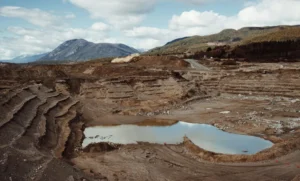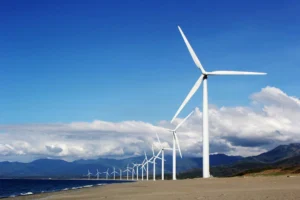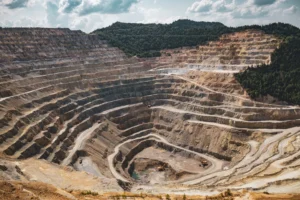Sustainability is essential to protect our world and environment. It relates to using resources in a way that does not damage the planet and ensures its availability for the future. Understanding what practices are sustainable will enable us to make better decisions for the environment. These practices are oriented towards maintaining the health of our ecosystems while supporting human needs.
It is important to know which is a sustainable practice? Operating wind farms, clear cutting, flood irrigation or overfishing.
Sustainable use practices redefine the way we live, promoting the balance of human needs with environmental preservation. This includes embracing the habits of energy conservation and waste reduction that contribute to a healthier planet.
Which is a sustainable practice? Operating wind farms, clear cutting flood irrigation overfishing

Wind farms are a sustainable practice because they generate clean energy from wind, which is a renewable resource. Among the options, wind farms stand out as the most sustainable choice because of their least environmental impact and contribution to reducing carbon emissions.
Interesting Facts About Wind Farms
- Wind farms can generate electricity that can power millions of homes. For instance, in 2020, wind energy accounted for 8.4% of the electricity in the United States, enough to power over 29 million homes.
- There was no emission of greenhouse gas by wind farms. Switching to wind as power instead of fossil fuel made wind farms avoid an estimation of 198 million tons of carbon dioxide from a U.S. based input in 2020 or equivalent to taking 42 million cars off the road.
Evaluating Practices

Operating Wind Farms
Wind power represents a source of renewable energy. The principle behind wind power is tapping the kinetic energy in wind to generate electricity. It forms an environment-friendly technology where clean and sustainable sources can be obtained instead of reliance on polluting sources for energy and mitigation of climatic changes.
The strategic placement of wind farms in rural areas reduces environmental disruption. By using wind power in these locations, we can avoid the harmful impacts associated with urban development, such as pollution and biodiversity loss.
Clear Cutting
This practice is deeply unsustainable and holds severe environmental impacts. When it clears vast areas of forest, it devastates ecosystems by causing wildlife to lose habitats and releases more carbon. It allows predators to target vulnerable species and destroys food sources for them.
Historically, deforestation or clear-cutting has been the dominant forestry practice in the Northern Hemisphere due to industrialization demands. Even though selective logging was very prevalent before, the increase in the number of industries dependent on timber required the need for more efficient, but ultimately destructive methods like clear-cutting.
However, clear-cutting is not the only option. Selective logging, a more sustainable approach, prioritizes the long-term health of the forest by harvesting trees strategically while minimizing environmental impact. This method allows for the natural regeneration of the forest ecosystem, ensuring its continued vitality for the future.
Flood irrigation
Flood irrigation, despite its historical context, is an unsustainable mode of agricultural practice with significant negative environmental impacts. Though practiced extensively throughout the world and more intensively in drier areas, it also presents critical inefficiencies in addition to pollution.
First, flood irrigation is inherently wasteful. Much of the water applied to the fields is lost through evaporation and deep seepage, reaching the crops inefficiently. This inefficiency worsens water shortage issues, particularly in regions already facing water stress.
The other aspect of flood irrigation is water pollution. Today’s modern agriculture uses excessive fertilizer and pesticide application, thereby polluting the irrigation water. The chemicals seep into the nearby water bodies, which harms aquatic life and disturbs the very ecological balance.
Also, using untreated industrial and municipal waste for irrigation inserts heavy metals into the agricultural system, thus threatening the soil health, food safety, and human health in extreme ways.
Finally, excessive water logging as a result of flood irrigation negatively impacts crop development; particularly for such sensitive crops such as legumes, maize, and wheat.
Despite having been applicable long ago, drip irrigation, among others, and sprinkler irrigation systems provide some excellent water saving advantages compared to the flood irrigation methods.
Overfishing
Overfishing endangers the well-being of our oceans. Removing fish from the sea at a rate that outmatches the reproduction abilities of fish degrades the sensitive balance within marine ecosystems. Such unbalanced action has led to huge reductions in fish stocks, bringing some species close to the brink of extinction.
Historically, the rise in global demand for seafood has been driven by a growing human population, leading to the expansion of fishing operations into deeper waters and an increase of fishing efforts that put immense pressure on fish stocks.
The effects of overfishing are well-reaching. It disrupts the food chain, influencing other marine species that depend on the fish for survival. This also leads to a further decline in biodiversity and contributes to severe socio-economic implications for coastal communities that fish for their livelihood.
A diverse approach will have to handle this critical issue, through stronger regulations of fishing practice, sustainable fishing methods, and enhanced efforts to fight illegal, unreported, and unregulated fishing.
Conclusion
Choosing sustainable practices is crucial for preserving our natural resources and the environment. Wind farms offer a clean, renewable energy source that helps reduce our impact on the planet. By supporting sustainable practices, we can help protect the earth for the future.
To support environmental sustainability, we should focus on practices such as operating wind farms that do not harm the environment. Choosing renewable energy sources, protecting forests, conserving water, and managing fish populations responsibly are main steps toward a sustainable future.
FAQ's
Which is an example of a sustainable practice?
Sustainable practices include renewable energy, energy conservation, and waste reduction and recycling.
Is wind farms a sustainable practice?
Wind farms are a sustainable practice. They use renewable wind energy to generate electricity with minimal environmental impact.
Is flood irrigation a sustainable practice?
Not sustainable.




